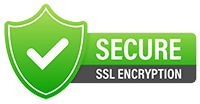How Mortgages Work
Embarking on the journey of homeownership is an exciting venture, and at the heart of this process lies a crucial element: mortgages. For those new to this financial landscape, we’re here to simplify the complexities. In this beginner’s guide, we’ll navigate through the fundamental concepts of mortgages, unraveling the mystery behind how they work, the various types available, and the essential terms integral to the home financing journey.
Getting the Money You Need: Imagine a mortgage as a friend who lends you money to buy a house. Instead of paying for the whole house upfront, you borrow money, commonly known as a mortgage loan.
Paying it Back, Bit by Bit: Repayment doesn’t happen all at once. Monthly payments, spread over an extended period (usually 15 to 30 years), contribute to both repaying the borrowed money (the principal) and covering the cost of borrowing (interest).
The Security Blanket: Your new house serves as security for the loan. If, for any reason, you struggle to make payments, the lender has the right to take the house back.
Types of Mortgages
Fixed-Rate Mortgages: Picture this like having a reliable companion. The interest rate remains constant throughout the loan term, offering predictability and easing budget planning.
Adjustable-Rate Mortgages (ARM): Think of this as a bit more adaptable. The interest rate can change after a specific period, affecting your monthly payments. It brings a bit more flexibility but also some uncertainty.
Government-Backed Loans: These are loans with government support. FHA, VA, and USDA loans fall into this category, each with its own set of requirements. They can be advantageous if you meet their criteria.
Key Terms in the Mortgage World
Down Payment: Your initial payment when buying a house, expressed as a percentage of the total price.
Principal: The borrowed money, indicating the amount of the loan yet to be repaid.
Interest: The cost associated with borrowing money, added to your monthly payments.
Amortization: A term describing how your payments are divided between repaying the loan and covering the interest.
Closing Costs: Additional fees that might be required when finalizing the purchase of your home.
Demystifying mortgages lays a solid foundation for your home-buying expedition. Consider this knowledge as your roadmap, guiding you through the twists and turns of the process. Remember, you’re not alone – there are professionals ready to assist you.
Whether you lean towards the stability of a fixed-rate mortgage or the flexibility of an adjustable-rate mortgage, grasping the basics empowers you to make informed decisions. Take your time, ask questions, and soon enough, you’ll find yourself stepping across the threshold into homeownership, transforming the dream into reality.




